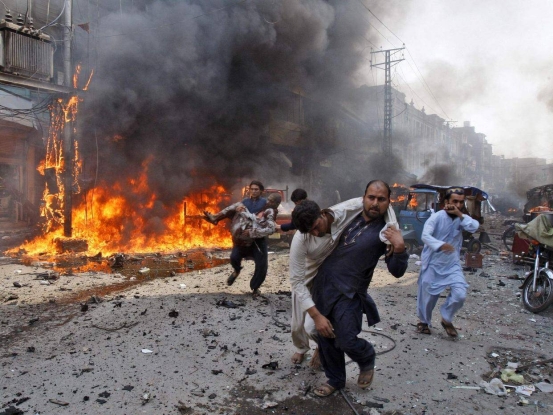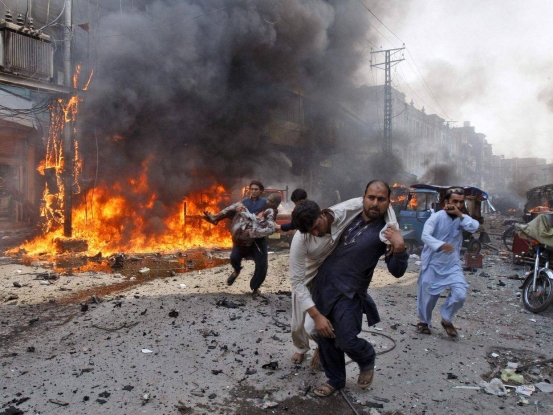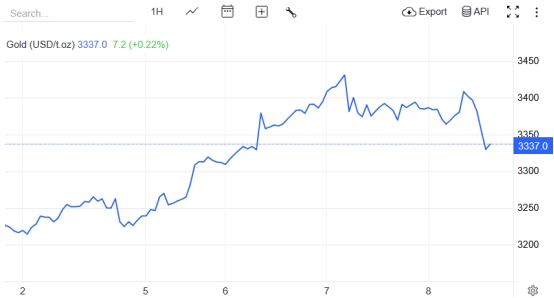India-Pakistan conflict escalates: Trump's "mediation" hides arms business, and the gold market is on a "roller coaster"
- 2025年5月12日
- Posted by: Macro Global Markets
- Category: News

In the early morning of May 7th, Beijing time, India launched a cross-border air strike on Pakistan, claiming it was in retaliation for the terrorist attack in Kashmir. Pakistan then shot down five Indian fighter jets (including three Rafale), killing 26 civilians. This most intense military confrontation since 1971 has caused a shock in the global capital market: spot gold once fell below $3,400 per ounce, but then the United Nations warned that "the world cannot afford a war between India and Pakistan", and risk aversion sentiment rebounded, pushing gold prices back to around $3,380. What is even more dramatic is that Trump suddenly declared on the 8th that he was "willing to be a peacemaker", but was accused of using mediation to promote arms and alienate relations between medium-sized passenger cars.

At 1:05 a.m. on May 7, India launched Operation Sindhor, firing 24 missiles at nine targets in Pakistan's Punjab province and Pakistan-controlled Kashmir, including civilian facilities such as mosques and residential areas, killing 26 people, including two children. The Pakistani army launched a counterattack within half an hour, relying on the combination of Chinese-made J-10CE fighter jets and PL-15 missiles to shoot down five Indian Rafale and Su-30 fighter jets and destroy an Indian brigade headquarters. This is the first time that Pakistan has shot down a Rafale fighter in an air combat, highlighting the advantages of its air defense system (Hongqi-9P long-range missile + active phased array radar).
Vào lúc 1:05 sáng ngày 7 tháng 5, Ấn Độ đã phát động Chiến dịch Sindhor, bắn 24 tên lửa vào chín mục tiêu ở tỉnh Punjab của Pakistan và vùng Kashmir do Pakistan kiểm soát, bao gồm các cơ sở dân sự như nhà thờ Hồi giáo và khu dân cư, khiến 26 người thiệt mạng, trong đó có hai trẻ em. Quân đội Pakistan đã phản công trong vòng nửa giờ, dựa vào sự kết hợp giữa máy bay chiến đấu J-10CE do Trung Quốc sản xuất và tên lửa PL-15 để bắn hạ năm máy bay chiến đấu Rafale và Su-30 của Ấn Độ và phá hủy một sở chỉ huy lữ đoàn Ấn Độ. Đây là lần đầu tiên Pakistan bắn hạ một máy bay chiến đấu Rafale trong một trận không chiến, làm nổi bật ưu điểm của hệ thống phòng không nước này (tên lửa tầm xa Hongqi-9P + radar mảng pha chủ động).
2. Behind Trump’s “Mediation”: Calculations of Arms Dealers and Geopolitical Game
On May 8, Trump suddenly changed his tone, saying that "relations with India and Pakistan are good and he is willing to stop the war immediately", but three real intentions were exposed:
Arms business: India will purchase more than $5 billion worth of American-made Apache helicopters and other equipment in 2024. This conflict may stimulate it to place additional F-35 orders. Pakistani media revealed that the PL-15 missile used by the Pakistani army to shoot down the Rafale had a range of 200 kilometers, far exceeding the Indian army's radar locking range (60 kilometers), exposing the disadvantages of American-made equipment.
Driving a wedge between the two countries: In his mediation statement, Trump deliberately emphasized that "Chinese weapons play a key role on the Pakistani side," attempting to blame the conflict on "Chinese military expansion" and weaken the influence of the China-Pakistan Economic Corridor (CPEC) in South Asia.
Shifting focus: The U.S. trade deficit soared to $140.5 billion in March, and Trump used mediation to shift domestic blame for his tariff policy. His aides admitted: "Minor conflicts between India and Pakistan are in the best interests of the United States - it stimulates demand for arms while avoiding U.S. military involvement."
3. Gold market: a "roller coaster" under the game between risk aversion and the US dollar
Short-term fluctuations: On the first day of the escalation of the conflict (May 7), spot gold fell 1.7% to $3,370 due to expectations that the "conflict is controllable." As of 14:00 on May 8, the gold price was $3,337, fluctuating by more than $70, continuing today's early trading and presenting a "roller coaster" experience.

